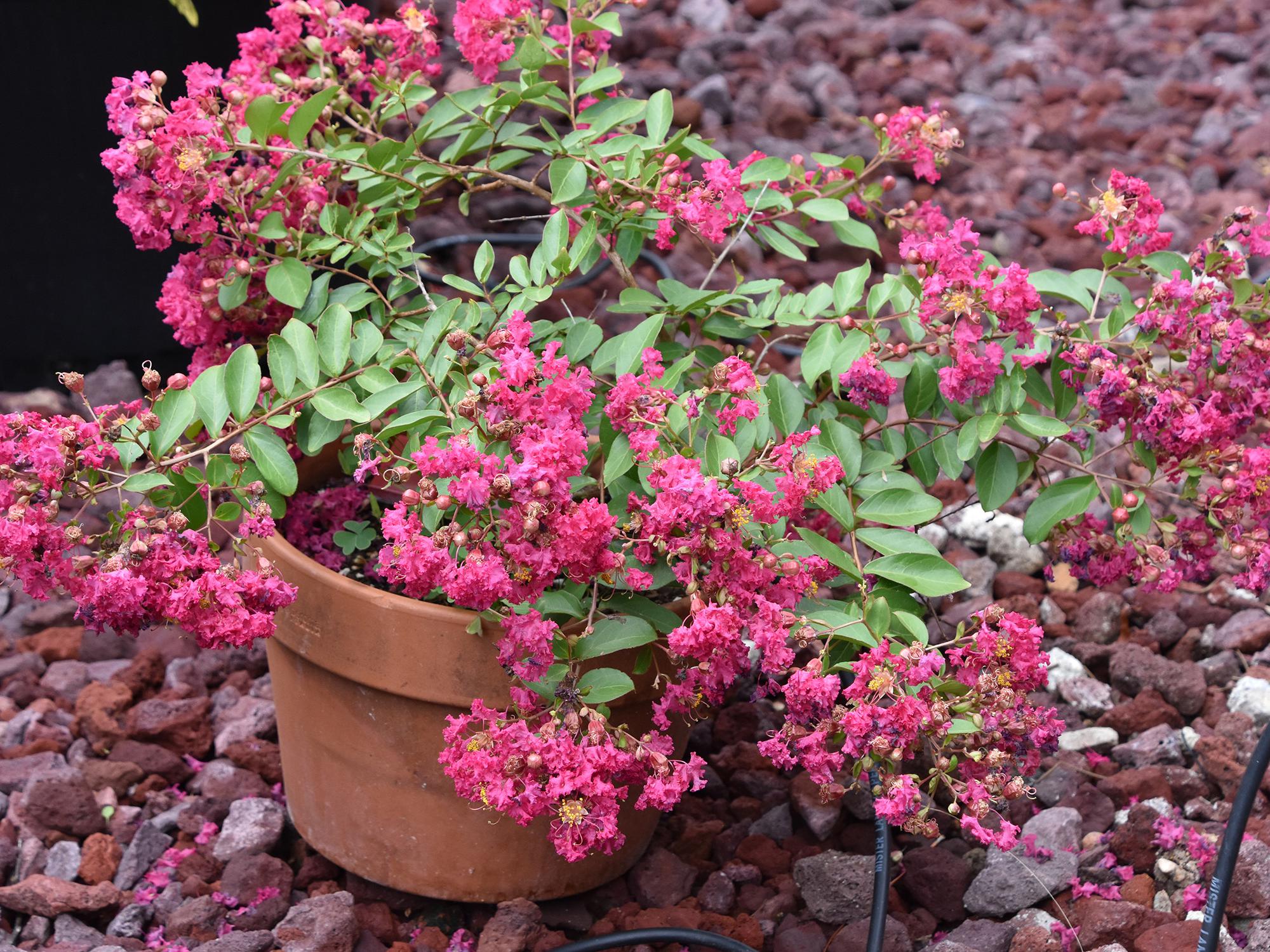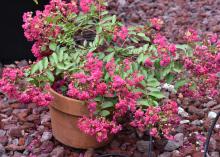Information Possibly Outdated
The information presented on this page was originally released on June 18, 2018. It may not be outdated, but please search our site for more current information. If you plan to quote or reference this information in a publication, please check with the Extension specialist or author before proceeding.
Choose crape myrtle variety to fit landscape space limits
I love crape myrtles in the landscape. They flower all summer, and their beautiful exfoliating and peeling bark exposes cinnamon-brown trunks in the winter. It's no wonder that somebody way back when called them the Flowers of the South.
For the past few years, yours truly -- The Southern Gardener -- and many of my horticulture friends and colleagues have been trying to address what seems to be a growing issue revolving around the annual pruning of crape myrtles. The issue is so bad, it's commonly called Crape Murder. This is where a tree is continuously cut back to the same place year after year, resulting in big, ugly knobs.
It is amazing the interest generated when photos of this massacre are shared with the world on social media. One memorable Facebook post showed a row of murdered crape myrtles less than a minute from my office in Biloxi. This image generated 146,000 views, 1,000 shares and 500 new likes.
I don’t think all those people were cheering, although I may be wrong. If you’re interested in some tips on properly pruning crape myrtles, enjoy our Southern Gardening TV segment, which is a crape myrtle parody.
With a sad heart, I’ve now come to a stunning landscape and garden realization: This is a hopeless cause. I’m not going to highlight crape murder when I see it in the landscape. No longer will I have any angst and the overwhelming urge to yell, “Stop the Crap, Save the Crapes!”
I’ve concluded that there’s no saving the trees already planted. My new campaign will urge potential new crape myrtle owners to choose wisely in regards to mature landscape size.
The problem is that any shred of self-control instantly vanishes when shopping at the nursery and seeing the trees in bloom with spectacular flowers in colors ranging from white, to shades of pink and purple, to rich reds. It’s similar to looking at a cute new puppy; you don’t ask how big it will get until you get home.
But home gardeners need to ask this very question before buying a nursery-grown crape myrtle. You don’t need to prune a crape myrtle to control its size. Instead, choose the right plant before planting to fit the space. This is the step many gardeners neglect.
There seem to be a bazillion varieties of crape myrtles on the market, and more are introduced every year. So, there’s plenty from which to choose wisely. You won’t have to settle for something you don’t actually like.
One new crape myrtle I’ve been growing for more than two years is Infiniti Watermelon from Proven Winners. This is a true dwarf that reaches only about 18 inches tall. It is perfectly fine growing in an 8-inch terra cotta pot, and it is right at home on the patio table or displayed in the landscape.
These is one more problem I want to remind all crape myrtle owners about. Be on the lookout for crape myrtle bark scale, or CMBS. This insect pest has been reported in Ocean Springs, Natchez and other locations across Mississippi.
CMBS exudes a sticky “honeydew” that rains down on the branches and any other surface below. I’ve experienced it, and it feels like being out in a fine, misting rain.
To manage this pest, apply systemic insecticides to the plant root zone during May and July. Systemic insecticides include dinotefuran (Greenlight Tree and Shrub Insect Control with Safari) and imidacloprid (Bayer Advanced Garden Tree and Shrub Insect Control). Allow several weeks for these insecticides to work because they must spread through the plant.
So, for now, the only controversy I’m going to care about is whether this wonderful tree is spelled crape or crepe.
Released: June 18, 2018
Related News
April 22, 2024
April 15, 2024
April 8, 2024
April 1, 2024
Pages
Related Publications
Publication Number: P3717
Publication Number: P3252
Publication Number: P2472
Publication Number: P2574
Publication Number: p3121



